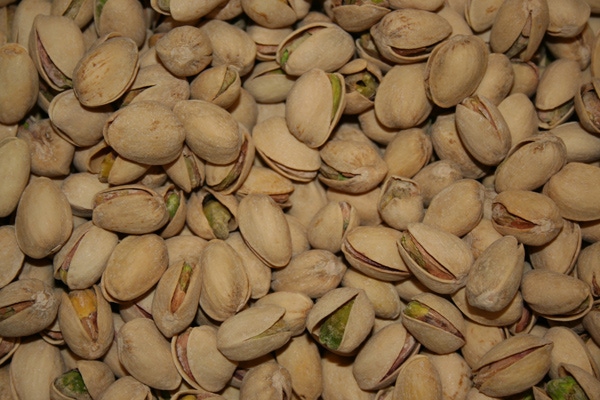
In the three decades that Brian Blackwell has been growing pistachios, he doesn’t remember seeing the harvest start as early as this one.
His orchard management businesses – Blackwell Farming Company, 2B Farming and Westside Farm Management – serve San Joaquin Valley clients in Kern, Kings and Tulare Counties.
Some growers started bringing nuts in from the field in the third week of August, he says. That’s as much as a week to 10 days earlier than last year’s start, which, itself, began a few days sooner than usual.
As the last week of August got underway and with no more than about 5 percent of his nut crop shaken from the trees, Blackwell was encouraged by the quality of his crop.
“We’re seeing excellent quality, but the quantity may not be there,” he says. “From what I’ve seen and heard from other growers, production looks to be slightly off.”
Yields of individual fields, reflects the amount of water available for the trees and the number of chilling hours last winter, Blackwell notes.
Good chilling in low areas contributed to a good overlap of pollination between male and female varieties. However, in warmer areas, where some males didn’t begin blooming until the females were almost finished, the percentage of blank nuts is higher than usual.
“We’re seeing a little less blanking in the new varieties, like Golden Hills and Lost Hills,” Blackwell says. “Some growers tell me that blanking in the Coalinga area is close to 70 percent. I don’t know what we’ll be up against when the harvest of the thousands of acres in the Lost Hills starts. Blanking there could be 1½ to 2 times higher than normal.”
Despite early-season concerns about the possibility of heavy navel orangeworm pressure on the crop, early harvest results show low levels of insect damage – no higher than about 0.25 percent in the nuts Blackwell has picked so far.
Meanwhile, he’s seeing some high split percentages, at least where trees received the water they needed to grow kernels large enough to crack open the shells.
Not that the water was easy to come by. In fact, much of Blackwell’s time and attention this season was devoted to getting it.
Blackwell manages orchards in nine different water districts. Some are in districts served by the Friant-Kern-Canal, which distributes water impounded by the Bureau of Reclamation’s Friant Dam in Fresno County. This season, most deliveries of this water were reduced to zero. Irrigation water for other orchards is supplied by State Water Project districts, which also cut allocations to zero this year. However, some of these districts have their own wells to help provide water for their members, Blackwell notes.
In one case, the owner of a smaller pistachio orchard, without a well, faced the prospect of dry season, when water allocations in his irrigations were cut to zero. However, Blackwell was able to get enough water from a neighbor to meet about half the trees’ needs for the season.
The cost of buying any available water ranged as high $1,100 per acre foot, he adds.
“So far, only five wells have gone dry,” Blackwell says. “Most of my clients will end up getting enough water to meet about 85 percent to 100 percent of the requirements for their pistachio trees this season. However, a few will get less.”
In traveling about his area of the valley this year, he’s seen, little, if any, damage from high-saline levels in water used to irrigate pistachios, a tree noted for its salt tolerance. It’s a different story for almond orchards.
“In all my years as a grower, I’ve never seen as much salt burn in almond trees as I have this season,” he says. “If you’re getting a fairly normal surface water allocation and mix it with well water that is slightly salty, you can minimize salt burn. But in a year like this, when you’re relying on wells for all your irrigation water, you can have burn problems.”
Due to the extended bloom, resulting from the poor synchronization of male and female trees during pollination, Blackwell expects many trees will receive a second shake this year. Still, because of the early start, the harvest should wind up early, too. He’s figuring the first week of October.
“That’s good,” he says. “By that time, we should have the good-size crop safely out of the fields. Then, let the rains begin!”
About the Author(s)
You May Also Like




